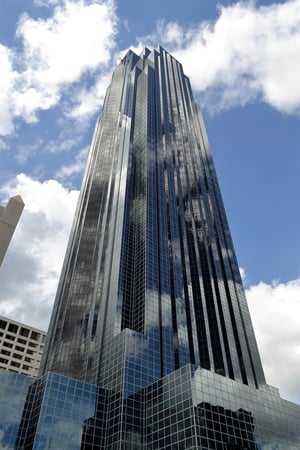If it’s true that seeing is believing, telecom claims are in trouble…rather, they used to be in trouble. The onset of WiredScore Certification has provided buildings and their owners with a tool that signals to the marketplace that a property is equipped with best-in-class connectivity and tech readiness. It allows a building’s image to go from that of dormant to more nimble and adaptive for what comes next to best serve tenants.
For landlords to position their assets as tech-forward, they must begin thinking about their tenants as customers and secondly, be willing to adapt to the rapidly changing pace of technology.
Think of Tenants as Customers
It wasn’t too long ago that some building owners viewed their role as simply matching a tenant to office space, and then checking back in toward the end of their lease to renew. Times have changed and the landlords who are getting ahead are those who have begun viewing their tenants as customers.

It’s no longer sufficient to merely provide the space for tenants, as companies are now expected to provide their employees with a positive work experience and the office they work in plays a major role. And in order to provide tenants with that positive work experience, landlords must embrace technology that underpins that tenant experience.
Think of different touchpoints throughout a tenant’s day which can be improved through building enhancements. From the time they walk in, life can be made easier with security clearance through a smartphone instead of fumbling around with a keycard with services like Openpath. And what if a calendar invitation automatically booked the meeting room, sent the attendees list to the building’s security system, used the number of attendees and time of day to adjust the HVAC and lighting, and the conference room’s television already had the correct presentation displayed when everyone stepped into the room? Through tenant apps like Comfy, much of this can happen.
Savvy landlords must always be asking how they can enhance the tenant experience in their building. This customer-first mentality, fused with an adaption of effective technology, will result in a more attractive property for tenants.
Your Building Must be Future-Ready
Being tech-forward also requires viewing your portfolio as future-ready. Although a building’s address will never change, the world around it will continue to move forward. This means that if an owner neglects measures toward future preparedness, he/she puts their assets in danger of obsolescence.
Some of New York City’s most innovative developments are putting in a fiber backbone to ensure all of a building’s tenants can reap the benefits of high-speed internet and potential smart building components down the line. In addition, a Distributed Antenna System (DAS) system delivers higher-quality cell phone reception throughout a property. When 5G becomes mainstream in the coming years, tech improvements like a DAS will separate the landlords who put care into future-readiness and those who didn’t.
Technology is moving so quickly that it’s no longer enough to meet the demands of today, but rather ensure that you’re also covered for what comes next. A trusted partner like WiredScore can conduct a review of a portfolio and assess how well it will be able to support the future of commercial real estate technology.
